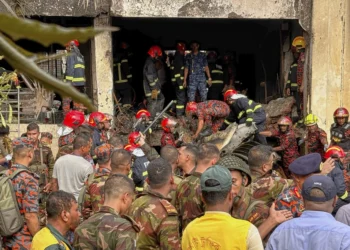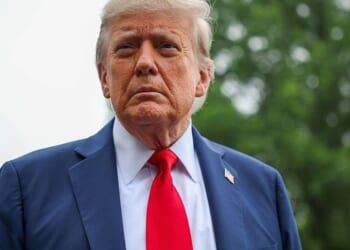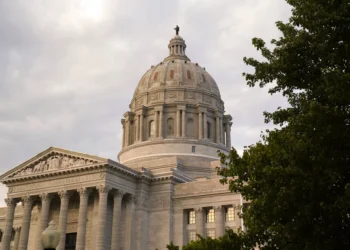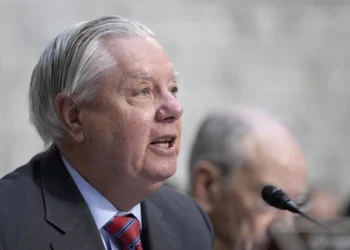CALGARY, Canada — President Donald Trump will return to the world stage for this weekend’s 50th Group of Seven leaders summit in Canada.
But Trump’s first multilateral summit of his second administration comes as Israel and Iran push the Middle East to the precipice of war and many of his G7 allies are under pressure to cut trade deals with the U.S. to avoid crippling tariffs.
Yet the White House, foreign diplomats from Canada, France, Germany, Italy, Japan, the United Kingdom, and the European Union, and foreign policy experts in conversations with the Washington Examiner all underscore the importance of at least trying to present a united front this weekend and next week in Kananaskis, despite deep disagreement over the likes of tariffs and the Russia–Ukraine war.
The emphasis on unity comes after the memorable image that emerged from the last time Trump was in Canada for a G7 summit. During the Charlevoix summit in 2018, the president was photographed sitting with his arms crossed as other leaders, including former German Chancellor Angela Merkel, who was leaning across a table, tried to engage him.
Similar to the 2025 summit, the 2018 summit was precipitated by steep U.S. tariffs. Then-Canadian Prime Minister Justin Trudeau’s decision to announce his determination to introduce retaliatory measures during his post-summit press conference provoked Trump into unendorsing the leaders’ communique, the first time there had not been a unanimous statement in the summit’s history.
Trump “blew up the meeting,” according to Center for Strategic and International Studies geopolitics and foreign policy department president Victor Cha.
“He arrived late. He called for Russia’s re-entry into the G7. He dissed Canadian Prime Minister Trudeau, and also did not sign on at the end to the G7 leaders statement. So we also could be in for some fireworks at this G7 given the overhang of the tariff issue for all of the G7 countries,” Cha, a former Biden and Bush administration aide, said this week. “They’re not planning on issuing a leader statement, which tells you a lot about the concerns that they’re not going to be able to reach consensus with the president and they want to avoid something like that.”
The White House confirmed that development on Friday, telling reporters, “Canada has worked with G7 colleagues to craft short, action-oriented leader statements on key issues of common interest.”
“Working discussions will, but not limited to, cover trade and the global economy, critical minerals, migrant and drug smuggling, wildfires, international security, artificial intelligence, and energy security,” the official said.
The official priorities of this year’s G7 host, new Canadian Prime Minister Mark Carney, include “protecting our communities and the world,” such as countering foreign interference and transnational crime, in addition to coordination around wildfires. They also include “building energy security and accelerating the digital transition,” such as through critical mineral supply chains and artificial intelligence, as well as “securing partnerships for the future.” As part of that last priority, Carney specifically referenced “open dynamic markets.”
In response, the White House official added Trump “is eager to pursue his goals in all of these areas, including making America’s trade relationships fair and reciprocal, unlocking new markets for American energy exports, and positioning the U.S. to be the world leader and international partner of choice on AI technologies.”
Tariffs will also be at the forefront of the 2025 G7 because of enumerated members European Commission President Ursula von der Leyen and European Council President António Costa, with Trump having not met von der Leyen in person during his second administration amid trade negotiations. Carney, too, has invited the leaders of Australia, Brazil, India, Mexico, South Africa, South Korea, and Ukraine to this year’s summit.
For Atlantic Council international economics chair Josh Lipsky, Trump’s approach to the G7 asks “how can we have this kind of alliance between the advanced economy democracies, if we’re also creating economic hardship?”
“The question they will ask back to him is, how can you ask us to be in some sort of grouping combination alliance against China, when at the same time we’re just trying to mitigate the fallout from the tariffs?” Lipsky, an alumnus of the White House, State Department, and International Monetary Fund, said. “Not only the tariffs as they are, but what is coming next. Are pharmaceutical tariffs coming? What else can we expect? What about when the July 9 reciprocal tariffs expire? So you’ve put this massive storm cloud over the G7.”
Other than Israel and Iran, the other storm cloud gathering over the G7 is the Russia-Ukraine war as Trump increasingly cedes leadership of the response to the conflict to the U.K. and Europe.
To that end, Ukraine is expected to advocate for a reduction in the Russian oil price cap, set in December 2022, from $60 to $30 per barrel. Meanwhile, Europe will advocate for it to be decreased to $45 before the North Atlantic Treaty Organization summit this month in Brussels, Belgium. There, Trump is anticipated to call on allies to up their defense spending to 5% of their GDP.
The hope is that lowering the Russian oil price cap will place more economic pressure on Russia to negotiate a peace deal with Ukraine, per Lipsky’s colleague, Atlantic Council Europe Center senior fellow Rachel Rizzo.
“Recent comments by Trump suggest he might prioritize a peace initiative over escalating tensions, potentially clashing with G7 allies who might favor stricter measures,” Rizzo said. “Trump is really worried about how this may disrupt global energy markets or alienate trading partners like India, which relies on discounted Russian oil.”
The G7 encountered problems early in Trump’s second administration when the president declined to describe Russia as the “aggressor” in the war in a statement marking the third anniversary of the conflict. Sources told the Washington Examiner at the time the U.S. position was to appear more impartial to encourage Russia to negotiate.
At the same time, the G7 has become more important as China and Russia stymie other multilateral organizations, including the United Nations Security Council, the Group of 20, even the World Trade Organization, though it is Trump who is threatening not to attend the G20 in November because it is being hosted by South Africa.
Of course, against the policy backdrop is the politics, especially regarding Trump’s personal standing on the world stage. A Pew Research poll this week, for example, reported that, across 24 countries, a majority of respondents told pollsters they consider Trump to be “arrogant” (80%) and “dangerous” (65%), but also a strong leader (67%).
Regardless, Heritage Foundation Margaret Thatcher Center for Freedom Director Nile Gardiner predicted Trump would “dominate” the G7.
“Most of the other world leaders present will seek to continue to develop a strong working relationship with President Trump,” Gardiner said. “I don’t think there’ll be any appetite to pick a fight with the leader of the free world at this summit.”
FULL LIST OF EXECUTIVE ORDERS, ACTIONS, AND PROCLAMATIONS TRUMP HAS MADE AS PRESIDENT
But for Cha’s CSIS colleague, Caitlin Welsh, a former Trump White House National Security Council and National Economic Council aide, the president’s definition of success is to be “seen to not be capitulating” because of his opposition to multilateralism.
“The Trump administration disagrees with or has an aversion to multilateral solutions to complex global problems,” Welsh said. “There’s strong ambivalence by the administration toward things like the G7 and we’ll just have to look to outcomes from this summit to see where we think that this administration is on the G7.”
















